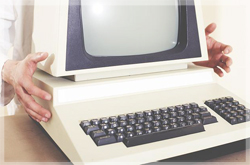 ⌨️ C128 Basic 7.0 Commands
⌨️ C128 Basic 7.0 Commands
The Commodore 128 features two different processors, making it effectively three computers in one. It supports the following operating modes:
- C64 Mode – Uses the 8502 CPU with a 40-column display, providing full compatibility with Commodore 64 software
- C128 Mode – Also powered by the 8502 CPU, this mode supports both 40- and 80-column displays and unlocks the advanced features of the C128
- CP/M Mode – Runs on the Z80 CPU with support for both 40- and 80-column displays, allowing access to a wide range of CP/M software
"Equipped with Dual CPUs and Capable of Running Multiple Operating Systems" 
Produced between 1985 and 1989, the Commodore 128 was Commodore’s final 8-bit home computer. Featuring two processors—the MOS 8502 and the Zilog Z80—the C128 could run Commodore BASIC and GEOS using the 8502, and CP/M via the Z80. In addition to the standard model, two desktop variants (C128D and C128DCR) were released, featuring a built-in 5.25” 1571 floppy disk drive and a 93-key detachable QWERTY keyboard.
Amstrad CPC — The European Home Computer Classic
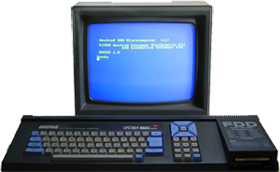
Launched in 1984 and produced until 1990, the Amstrad CPC (Colour Personal Computer) was a series of Z80-based 8-bit home computers that played a key role in shaping the European computing scene. Competing with the likes of the ZX Spectrum and Commodore 64, the CPC line carved out a strong following, especially in France, the UK, and Germany.
- The CPC series, particularly the CPC 464 and CPC 6128, enjoyed significant commercial success, thanks to their all-in-one design, robust software support, and multimedia capabilities.
- In 1990, Amstrad introduced the CPC Plus range with enhanced graphics and stereo sound. However, by then, the 16-bit era had arrived, and the upgrade came too late to make a major impact.
"ARMed with Speed": The Acorn Archimedes Legacy
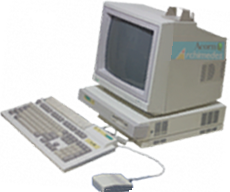
Released in June 1987, the Acorn Archimedes was a groundbreaking line of educational computers developed by Acorn Computers. Manufactured until the mid-1990s, these machines were among the first to use the revolutionary 32-bit ARM RISC architecture and the RISC OS, featuring a multitasking, mouse-driven graphical user interface.
Key Features:
-
32-bit ARM RISC architecture
-
GUI with cooperative multitasking
-
Primarily sold in the UK educational market
"NeXT WorkStation.. The Savior of Macintosh"

Launched in 1988, the NeXT Computer was a groundbreaking workstation developed by NeXT Inc., the company founded by Steve Jobs after his departure from Apple. NeXT produced these machines until 1993, and in a twist of history, Apple acquired NeXT in 1996 for over $400 million, laying the foundation for macOS as we know it today.
-
The original NeXT Computer debuted in October 1988 with a price tag of $6,500 (equivalent to $15,900 today)
-
In 1990, the high-end NeXTcube followed, priced at $7,995 ($17,800 in 2023)
"ZX Spectrum -The Affordable 8-Bit Revolution"
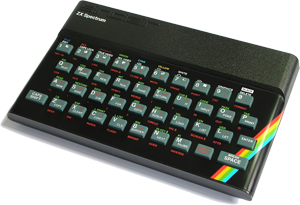
Launched in 1982 by Sinclair Research, the ZX Spectrum became the first truly affordable 8-bit home computer. Sir Clive Sinclair envisioned a computer in every home. To make this possible, early models were even offered as DIY kits. For example, the ZX80 Starter Kit was priced at just £79.95 (or £99.95 fully assembled), selling around 50,000 units.
- The real breakthrough came with the ZX81, which sold 500,000 units in its first year alone
- Later Spectrum models retained the same Zilog Z80 CPU, but added significant improvements in graphics, sound, and storage
"C64 -Commodore's Cash Cow and a Brilliant Computer"
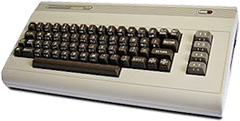
Founded in 1958 by Jack Tramiel, Commodore International was a pioneering American computer manufacturer. Known for producing a wide range of 8-, 16-, and 32-bit systems—including the iconic Amiga series—Commodore’s most successful product was the Commodore 64 (C64). With over 14 million units sold between 1982 and 1994, the C64 became the best-selling single computer model of all time.
![]() COMMODORE 64 AT A GLANCE
COMMODORE 64 AT A GLANCE
- Powered by MOS Technology CPUs -MOS 6510/8500 @ 1.023 MHz (NTSC) / @ 0.985 MHz (PAL)
- Supported 16 colors, 8 hardware sprites (24×21 pixels), and smooth hardware scrolling
Xerox Alto — The Grandfather of Modern Computing
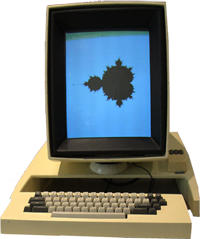
Developed in 1972 and released in March 1973, the Xerox Alto was a groundbreaking machine created at Xerox PARC (Palo Alto Research Center). Though never sold commercially, it became the foundation for many technologies we now take for granted in personal computing. The Alto introduced the world’s first graphical user interface (GUI), Ethernet networking, optical mouse, high-resolution bitmapped display, and was also the first system to use a laser printer—another innovation from Xerox.
Originally designed as a research prototype, the Alto was deployed across universities and Xerox facilities, paving the way for modern user-centric computing.
- Only 120 Alto I units and around 2,000 Alto II units were built







